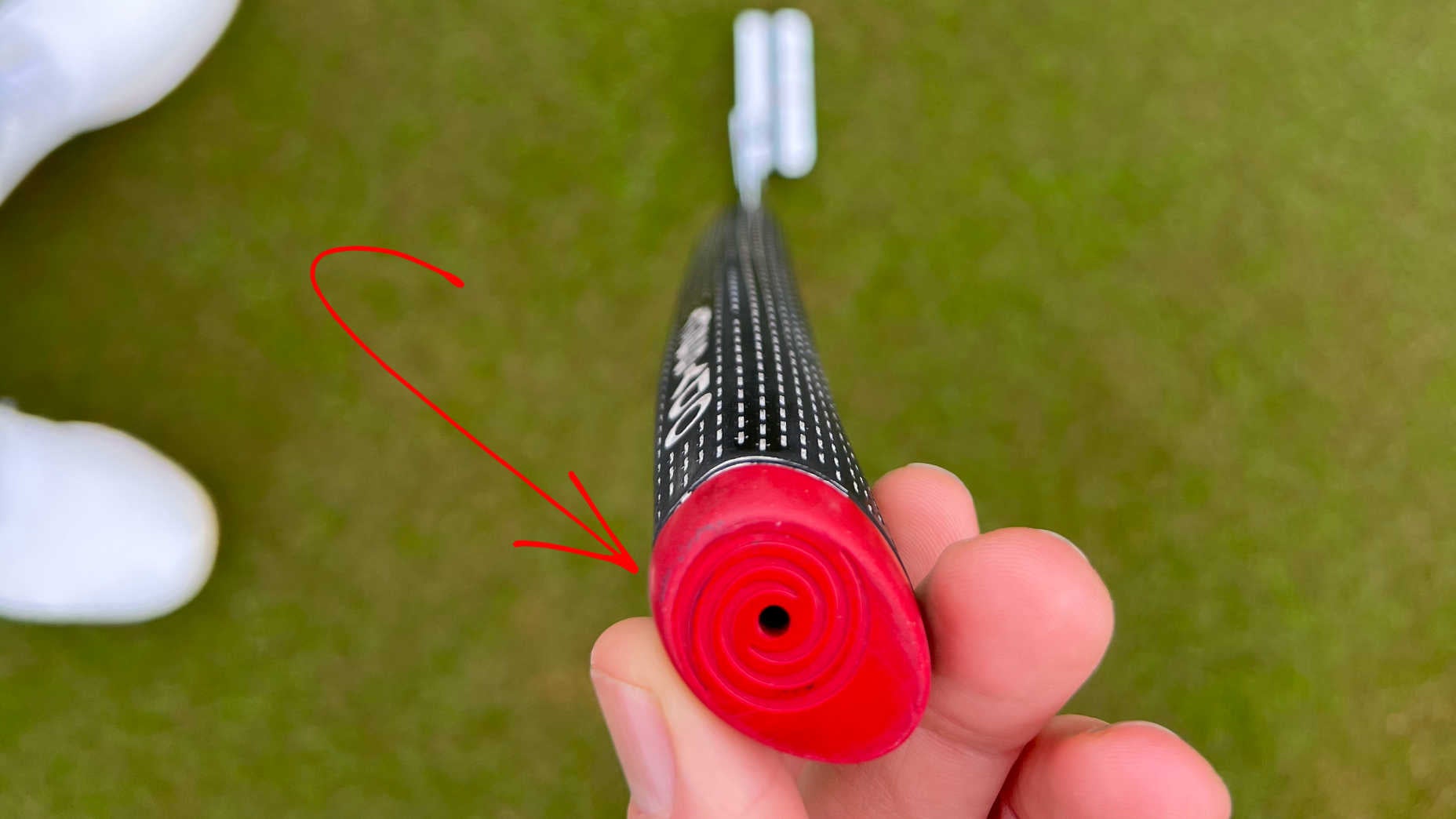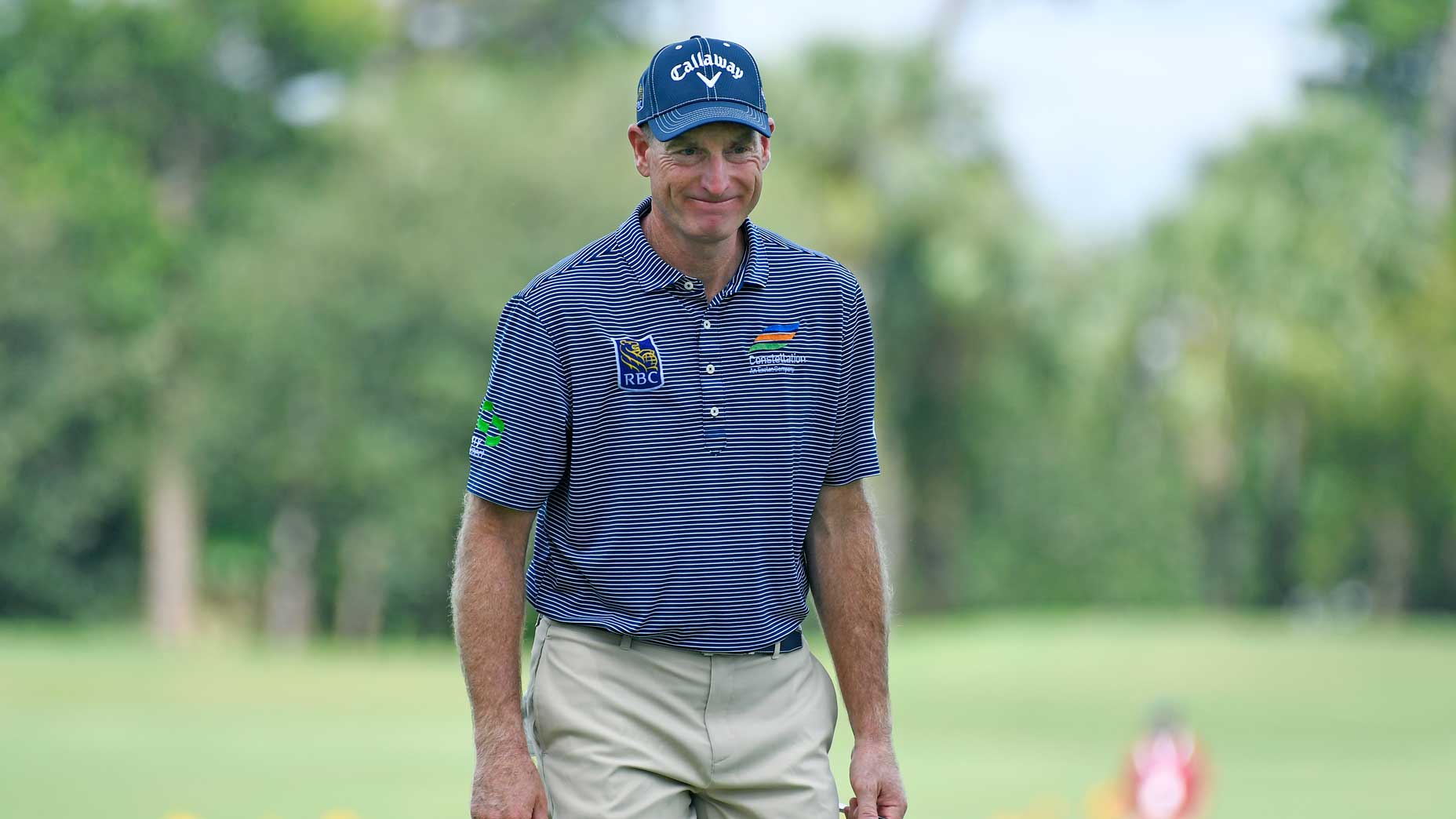Jim Furyk’s path to professional golf is wholly unique. (And not just his swing path.) He didn’t learn the game on the grounds of a ritzy country club. Most of what he knows about golf he taught himself. And what little he didn’t invent on his own he learned from his father — who doubles as the only coach Furyk has ever had.
And it was from his dad that Jim says he heard “one of the best tips he’s ever gotten.”
It came when he was on the golf team at the University of Arizona.
“I was a good player at this point,” he said.
But Furyk was on range, struggling with his ball-striking, and growing increasingly frustrated. He was hitting a full 8-iron to a flag on the range.
Young Furyk. Iconic. pic.twitter.com/0VdCPLfxO7
— LKD (@LukeKerrDineen) February 1, 2022
“So my dad gets a bag of balls and throws them on the ground and says: ‘I want you to hit full 7-irons to that pin,’ and I don’t want one of those balls to finish long,” Furyk says.
Knowing the 7-iron was too much club, Furyk says he started looking for loopholes.
“I asked, ‘Can I choke down? Can I hit knockdowns? Can I shorten my swing?'”
The answer to each question was no, Furyk says. His father wanted him to make full swings but make sure he would consistently hit his 7-iron flew his 8-iron distance.
A key to distance control and tempo
Furyk silking a drive down the range. Asked him what his go-to shot was.
— LKD (@LukeKerrDineen) February 7, 2022
“Straight. Maybe something that falls two yards right, but mostly just straight.” pic.twitter.com/mUl3cQj8vL
At first, things didn’t go well.
“I was hitting it far; I was hitting it thin; I was struggling with being able to change the pace of my swing,” Furyk explains.
But by the time he had gotten to the end of the bag of golf balls, Furyk said he had “figured out how to do it.”
“All of a sudden I could put a nice smooth swing on it and the ball flight came down; I got control of my tempo; I could control my distances really well,” Furyk says. “It gave me another shot, or another tactic.”
Practicing hitting longer clubs to shorter distances is something Furyk says he still does today — and is something you should try, too. Practicing that way, he says, helps hone your creativity and precision. He points to Tiger Woods — “the best iron player I’ve ever seen” — as someone who has perfected hitting different clubs different distances.”
“I’d recommend it to anybody looking to get some more control over their tempo and ball striking,” he says. “It taught me a little more about playing golf.”










